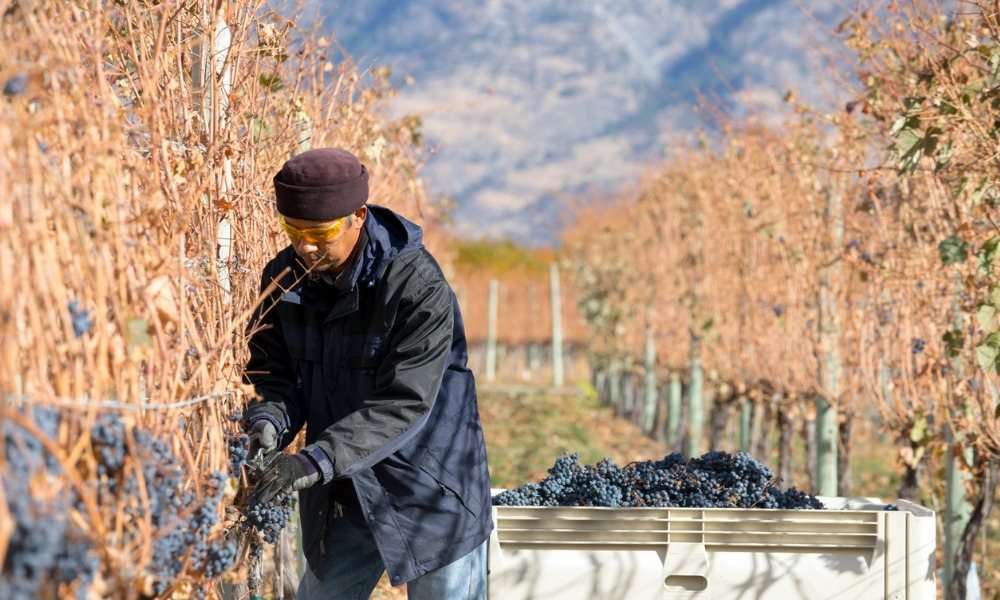
Amid height of pandemic, few workers had access to tests, essential supports, finds report

Labour exploitation is a common practice in Canada, and migrant workers are unaware of what they are coming into, according to a recent report.
The majority of migrant workers are aware of the terms human trafficking (77%) and labour trafficking (61%). And while 65% claimed they knew a victim of trafficking in Canada – whether themselves or someone else, less than half (48%) knew that it occurs in Canada.
And even those who have had experience with exploitation before still fall to the same trap when they come to this country.
“I am still in shock because in Mexico I have heard about human trafficking, but I never thought I would be in this situation [in Canada]. I would always think: how could people fall into these situations? How could they be tricked so easily? There is so much information out there,” said one survey participant in the report titled It Happens Here: Labour Exploitation Among Migrant Workers During the Pandemic, a joint project by the Canadian Centre to End Human Trafficking, FCJ Refugee Centre and Legal Assistance Windsor.
“However, after this happened to me, I saw that it can happen to anyone – it made me realize I cannot judge anyone. I thought it was a good opportunity to come to Canada because there are more opportunities and safeguards than in Mexico.”
In April 2022, Ottawa announced major changes to the Temporary Foreign Worker (TFW) Program “to meet the labour market needs of today.”
Being away from their family is the top challenge that migrant workers face when they come to Canada (57%), according to the recent report.
However, they are also dealing with a multitude of other challenges, including:
In August 2022, Syed Hussan, executive director at Migrant Workers Alliance for Change, called for a revamp of the system that governs migrant worker’s employment in Canada, claiming that the status quo is “systemic slavery.” That call came after 57-year-old Garvin Yapp was fatally injured while operating farm equipment.
“The emotional and mental exhaustion that we experience at the farms is a lot,” said one respondent to the new survey. “There’s a lot of pressure that comes with being in a new country where you don’t even know the language. You don’t know your rights as a temporary farm worker. You can’t even tell your family that everything sucks because you don’t want to worry them. You bottle these things up and, in the long run, it affects your body and emotional state.”
Migrant workers’ lives in Canada also got worse during the height of the COVID-19 pandemic, according to the recent report.
Sixty percent of the respondents worked through the entire pandemic period (March 2020 to March 2022), and only 43% were able to access general health care during that time.
Approximately 23% of respondents contracted COVID-19 once and 4% contracted the virus more than once. Yet, only 26% of participants reported that they had access to PCR tests and only 18% had access to rapid tests.
Also, just 23% had access to general healthcare and 11% relied on community organizations. Only 8% reported that they were able to access financial aid such as unemployment insurance or a specialized COVID-19 financial assistance program.
Temporary foreign workers (TFWs) in British Columbia experienced many types of abuse perpetrated by employers and their agents, according to a report from the Migrant Workers Centre (MWC) released in March 2022.
In May 2021, the Migrant Workers Alliance for Change questioned the safety of migrant workers while in quarantine following the death of at least five migrant farmworkers.
Also, during the early months of the COVID-19 pandemic, some 25 per cent of the total death count because of COVID-19 were attributed to immigrants, according to a previous report. Also, migrant farm workers who come to Ontario from other countries are at higher risk of contracting COVID-19 and other diseases. This is due to their communal living and working conditions, according to a previous report.
The lack of awareness may be caused by their unawareness of their rights in Canada, the recent report noted, based on a survey of 77 migrant workers from across different sectors in Ontario in 2022.
Approximately 60% of participants reported that they have not received information about their labour rights. Another 38% said they did receive information on their rights upon arrival, but that information was only provided in English. Only 14% indicated they had received information in their primary language.
This is the case even though the majority of workers wanted to get the information priori to their coming to Canada (37%) or upon their arrival (34%). About one in five (19%) wanted to learn about it from their employer.
The best channels through which to educate migrant workers, they said, are: